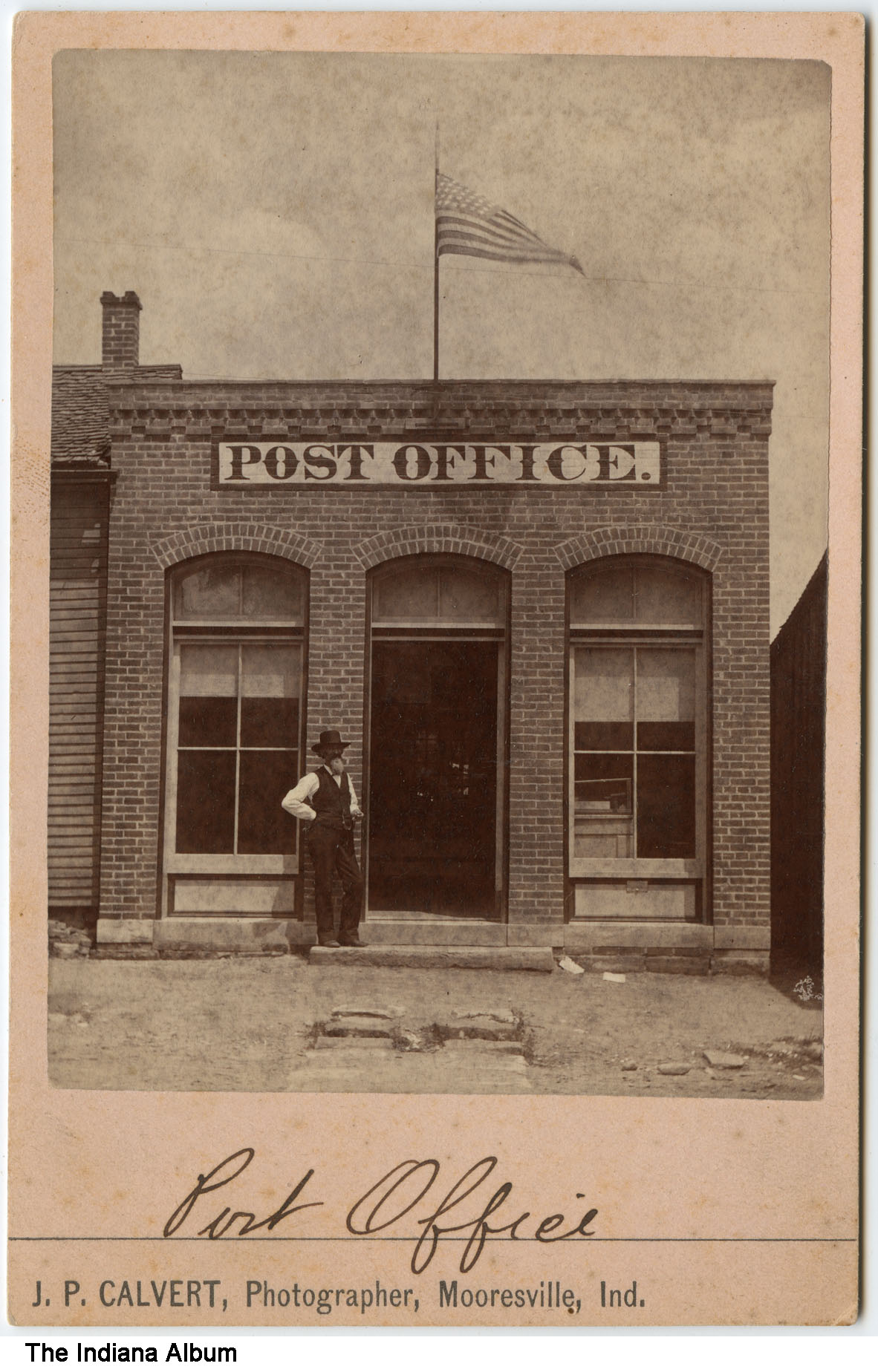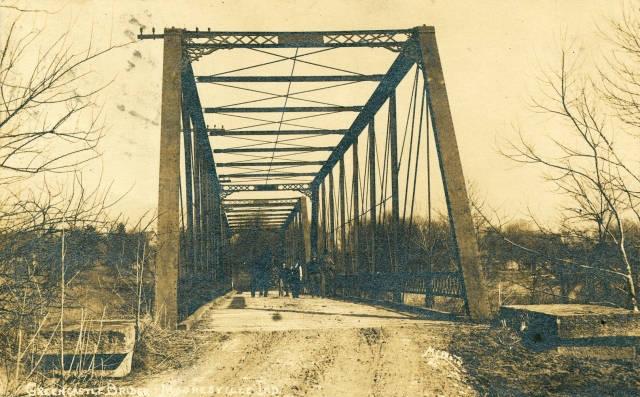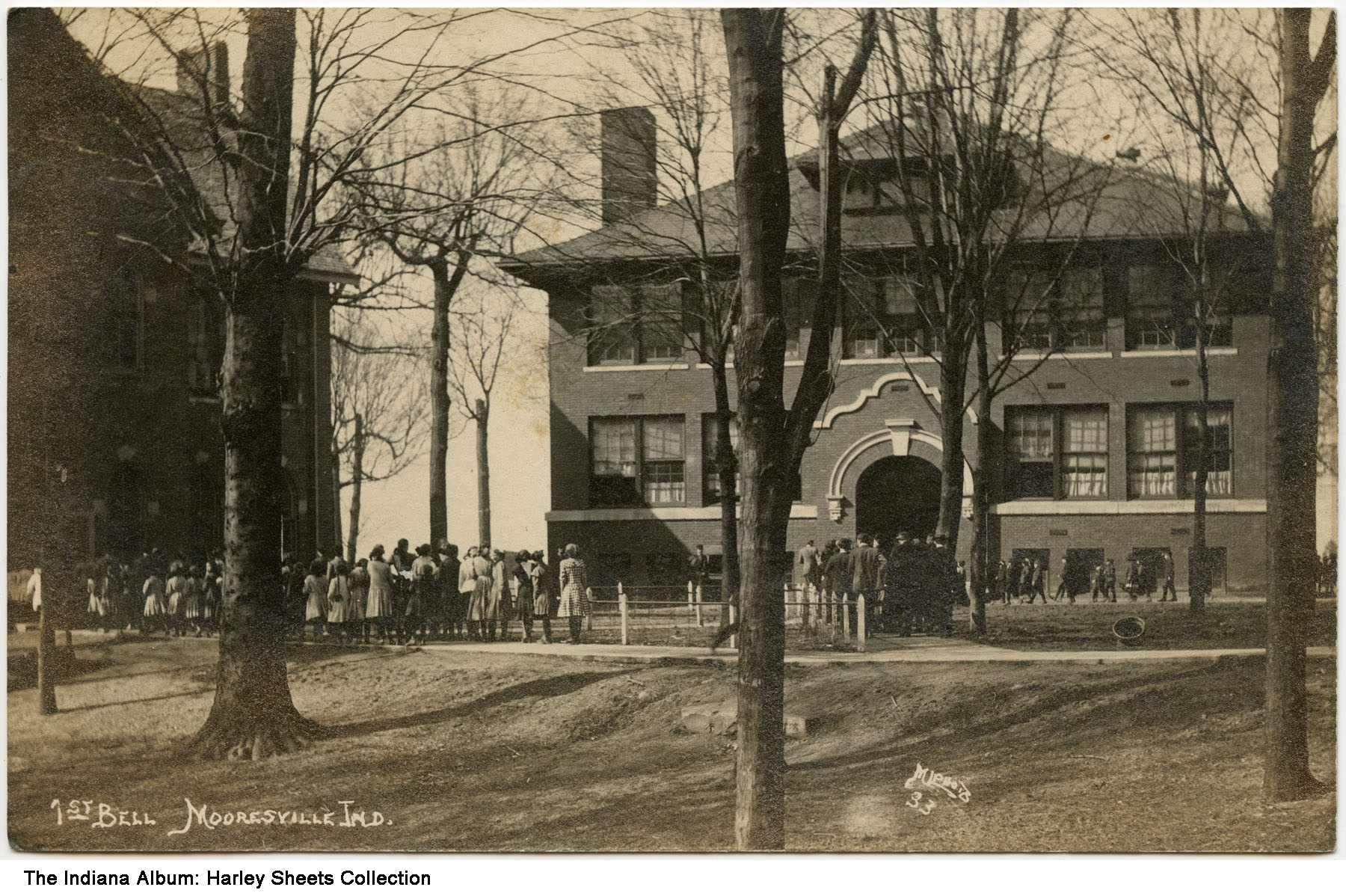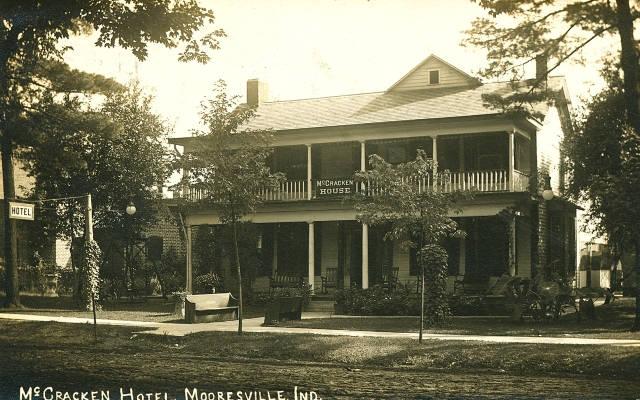The Town of Mooresville, covering 6.34 miles of land and water, lies in the northeast corner of . Samuel Moore founded the town in 1824 after his Quaker family moved from North Carolina in 1818 to Washington County, Indiana, settling near the town of Salem. The Moore family moved north to escape the South’s use of slavery, which was inconsistent with their religious beliefs.

Moore established the first trading post in Brown Township, Morgan County, in 1822. He conducted business here on what in 2020 is South Indiana Street, a few hundred feet east of White Lick Creek, for 44 years. In 1823, Moore purchased 20 acres of land at $2 per acre, which he divided into four five-acre blocks. Each block contained 16 lots. The entire area sat on a fertile delta between the east and west forks of White Lick Creek, and about a half-mile north of his trading post. Though he platted the town in 1824, the plat was recorded on February 21, 1825. Moore did not have a public sale of the lots; instead, he privately sold the land to desirable citizens.
In 1828, Samuel Moore married Eliza Worthington, who later founded the Methodist Episcopal (M.E.) Church in Mooresville. Both the Quaker and the Methodist faiths became important in the early development of Mooresville.

Arriving at the same time as Moore was fellow Quaker and North Carolinian Asa Bales. Bales and his wife built the first cabin in Mooresville where they raised orphaned children. A decade later in 1832, they left Mooresville to pioneer the development of , Indiana, in . In 1826 Alexander Worth & Company opened Mooresville’s second store as well as a woolen mill. The first school society in Mooresville was organized in Samuel Moore’s store in 1828.
By 1831 the population of Mooresville had grown to 200. The town was incorporated in 1838. The Mooresville Chronicle was established in 1846 and lasted four years. In 1872, the first bank, Savings Bank of Mooresville, was established. At the time of Samuel Moore’s death in 1889 at the age of 90 Mooresville’s population reached 974.

To meet the growing community’s needs the Society of Friends created Mooresville High School in 1861, inside the Friends Academy building. The high school served as Indiana’s only privately funded school open to public education.
In 1920, , cofounder of the , the , and the Zig-Zag Cycling Club, gave a 140-acre farm located west of Mooresville along with considerable other property to the Mooresville School Association. He asked that the properties be sold and the proceeds used to fund a new school named in memory of his uncles, William and Milton Newby. In 1935, plans were drawn to construct the William and Milton Newby Memorial Elementary School on the grounds of the then-existing elementary school, the Friends Academy Building, which originally housed Mooresville High School. Construction of a Georgian Colonial-style building began in January 1936 at a cost of $93,000. The building was listed on the National Historic Register in 1975.

The restored building remains on the Newby campus and serves as a local history museum as well as the offices of the Community Foundation of Morgan County. Also on the Newby campus is the original Mooresville High School Gymnasium Building or the “Newby Dome.” The gymnasium was built in the early 1920s and placed on the National Historic Register in 1997.
Mooresville Consolidated School Corporation consists of one high school (grades 9-12), one middle school (grades 7-8), and five elementary schools (grades k-6). The school district also has college credit, credit recovery, and online course options for high school students.
The Mooresville Commercial Historic District is a national historic district located roughly one block north, south, east, and west of the corner of Indiana and Main Street. Thirty-five buildings and one object each developed between 1872 and 1952 encompass the district. Exhibiting Italianate, Gothic Revival, Classical Revival, Commercial Style, and Bungalow/American Craftsman style architecture, notable buildings include the Farmer’s State Bank, Nelson and Son Hardware, Mooresville Carnegie Library, Carlisle and Gilbert Building, Pure Oil Service Station, A. H. Scruggs Building, Mooresville Municipal Building, and the Mooresville Methodist Episcopal Church complex. The district was listed on the National Register of Historic Places in 2003.
Not listed on the National Register of Historic Places, yet an important reminder of the founding of Mooresville is the Wabash Conference of the of North America. Established in 1958, the Wabash Conference represents a family of seventy-six Free Methodist churches in Indiana, West Virginia, and Illinois.

Is this your community?
Do you have photos or stories?
Contribute to this page by emailing us your suggestions.